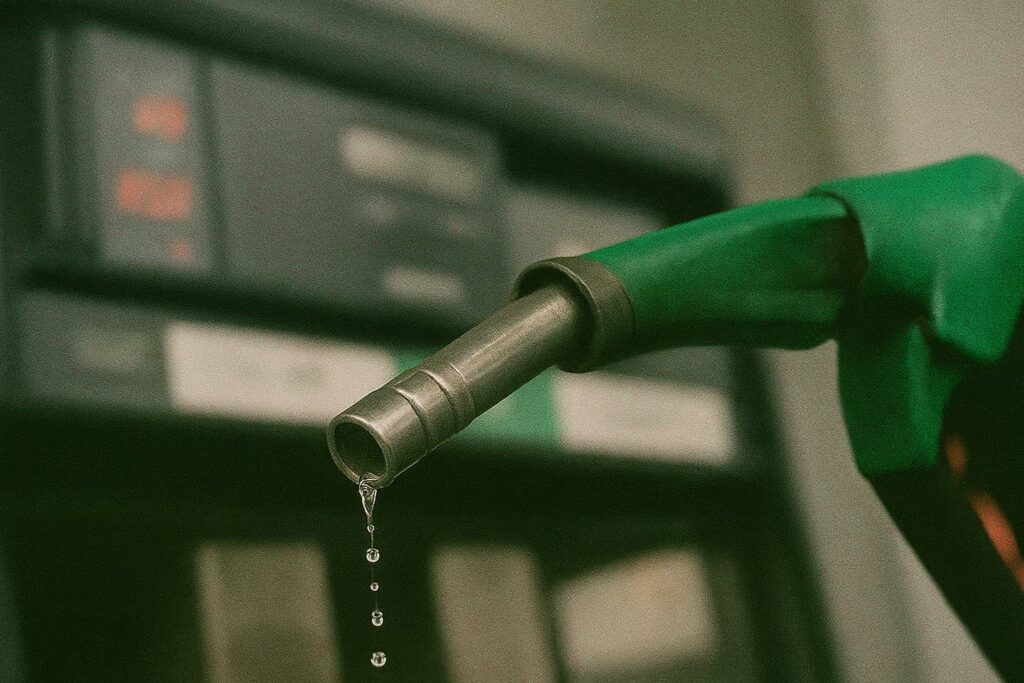Global Benchmark Rally Sparks Limited Regional Contagion
Brent futures vaulted from 83 to nearly 97 US dollars per barrel in the two trading sessions that followed Iran’s symbolic drone strike on Israeli territory in mid-April, reflecting traders’ traditional risk premium whenever the Strait of Hormuz is mentioned. Yet West and Central African spot cargos largely sidestepped the spike, a reality noticed by Cameroonian import planners as early as the 48-hour post-incident window (Bloomberg).
Fiscal Buffering Under Yaoundé’s 2024 Budget Architecture
Finance Minister Louis Paul Motaze reminded the National Assembly that the 2024 finance law pencilled in an oil reference price of 80 dollars for state-owned SONARA’s import parity calculations, a level still below the crisis peak. The five-dollar spread between budgeting assumptions and real-time quotations created an automatic cushion, enabling the Treasury to absorb minor shocks without adjusting retail tariffs. Treasury officials interviewed in Douala underscore that a specific line—subvention au prix à la pompe—was endowed with 120 billion CFA francs, roughly 0.8 percent of GDP, before the crisis.
Logistical Insulation: Hedged Cargoes and Unaffected Supply Routes
Cameroon’s refined-product supply chain relies on term contracts with European refiners routing through Las Palmas and Abidjan rather than the Persian Gulf. According to data from Kpler, over 85 percent of the country’s gasoline cargos during the first quarter originated in the Mediterranean basin. Consequently, even if Hormuz traffic had faced disruption, the physical barrels earmarked for Limbe’s depots were already on the water or financially hedged at earlier price points. Freight operators corroborate that neither Suez nor Bab-el-Mandeb faced congestion strong enough to trigger premium war-risk insurance for vessels bound for the Gulf of Guinea.
Monetary Prudence Within the CEMAC Convergence Framework
The Bank of Central African States (BEAC) has maintained a vigilant yet non-interventionist stance, keeping its policy rate at 5 percent. That decision limited imported inflation across the six CEMAC members, permitting Cameroon to retain nominal pump prices at 740 CFA francs per litre for gasoline and 720 for diesel. Regional economists note that a sudden depreciation of the CFA franc—still pegged to the euro—would have transmitted international volatility directly to domestic consumers. Paris-denominated reserves presently exceed the statutory 75 percent threshold, offering an additional shield.
Diplomatic Equilibrium and the Absence of Supply Shocks
While many Western chancelleries publicly speculated about a broader Middle-East conflagration, Gulf Cooperation Council diplomats quietly conveyed to African counterparts that shipping lanes would be kept open. Yaoundé’s foreign ministry confirms receiving such assurances through the Arab–Africa Economic Forum in Riyadh, a channel that eased concern among Cameroonian energy planners. Analysts at the London-based Energy Intelligence stress that Iranian refineries located in Tabriz, Isfahan and Bandar Abbas continued to operate at above 80 percent utilisation, undermining the narrative of an imminent global shortage.
Prospective Scenarios: Managing Expectations in a Volatile Arc
Should escalatory rhetoric translate into kinetic action targeting energy infrastructure—an eventuality not entirely dismissed by the International Energy Agency—Cameroon’s current buffers could erode within weeks. SONARA’s forward cover averages 45 days, after which replacement cargoes would reflect whatever premium persists. In that scenario, Finance Ministry technocrats hint at a graduated pass-through mechanism: a one-digit percentage adjustment offset by expanded social-safety cash transfers. For now, however, the government’s communication line maintains that no revision is under active consideration, a statement echoed by service-station operators in Yaoundé’s Nlongkak district.
A Measured Calm Amid International Volatility
Cameroon’s ability to maintain domestic fuel stability during external upheaval demonstrates the interplay of prudent budgeting, diversified logistics and discreet diplomacy. While market actors remain alert to any deterioration in the Gulf, the prevailing consensus among regional financiers is that Central Africa’s refined-product equation hinges more on euro-dollar dynamics and Atlantic Basin refinery margins than on headline risk emanating from Tehran or Tel Aviv. The episode therefore serves as a case study in how mid-size African economies can weather geopolitical tempests without unsettling their socio-political equilibrium.

